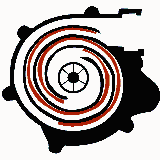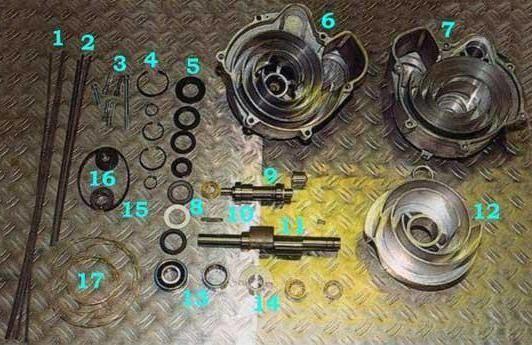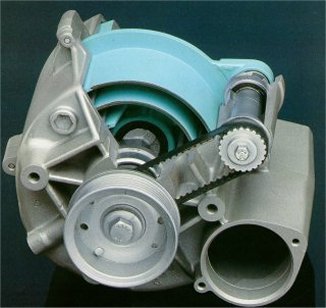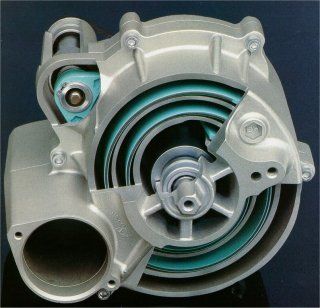Subjects:
- History
- Operation
History:
The G charger was invented in 1905 by the Frenchman Le Creux. When Volkswagen decided to achieve power through superchargers, they continued to develop the concept of Le Creux. About 400 different versions were developed before VW developed the old generations of the G loader (Golf / Corrado / Polo G40 and G60).
Operation:
The G-loader is a mechanical compressor that is driven via the crankshaft. The advantage is that the compressor is already working when the accelerator pedal is touched; in contrast to the turbo that first has to be started by the exhaust gases. The G charger therefore has a very fast response time. This gives the driver the feeling of driving an engine with a much larger displacement.
A G-Lader is a double spiral chamber (snail shell) inside. The supplied air arriving in the left outer spiral chamber of the G-Lader is discharged by the air displacer by means of an eccentric movement through the right outer spiral chamber at a standard pressure of 0,7 bar to the intercooler. Because of the compression, the temperature of the air can rise to 100 degrees Celsius. The intercooler then cools it down to about 65 degrees. The cooled air is then forced to the intake manifold.
The action of compressing the air is explained by the animation displayed.

A G charger needs to be overhauled approximately every 50.000 km. It has been taken out of production by Volkswagen due to its vulnerability (dirt particles in the intake air), maintenance sensitivity and high repair costs. A roots compressor is a better alternative, which is still regularly used by car manufacturers today.
The image below shows all the parts of a disassembled G-loader. Below are two images of an overhauled G charger.

1: Long sealing strips.
2: Sealing strips short.
3: Bolts out of the housings.
4: Retaining rings
5: Seal rings (sealing of the oil channels).
6: Exhaust House
7: Suction housing
8: Seals
9: Balance shaft
10: Dowel pin
11: Main axis
12: Displacer
13: Main shaft bearings
14: Counterweight
15: Toothed belt
16: Main shaft and balance shaft gears
17: Spring lists


